#aciculata
Text
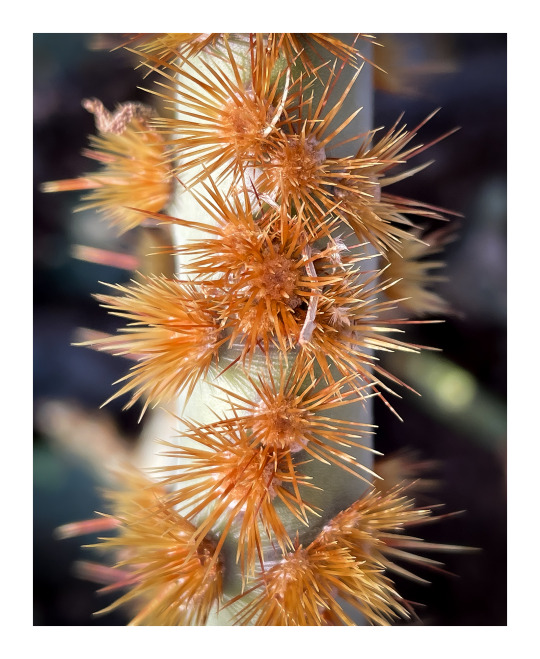
Chenille pricklypear cactus (Opuntia aciculata) at the Desert Botanical Garden, Phoenix, Arizona.
Etymology note: The species name aciculata is derived from the Latin word acicula, meaning a small pin used to secure a head covering.
#photographers on tumblr#chenille pricklypear cactus#Opuntia aciculata#Desert Botanical Garden#Phoenix#Arizona#etymology#phone photo
111 notes
·
View notes
Video
n304_w1150 by Biodiversity Heritage Library
Via Flickr:
The Cactaceae. v.1. Washington :Carnegie Institution of Washington,1919-1923. biodiversitylibrary.org/page/32090209
#Cactaceae#Classification#Pictorial works#Mertz Library#The New York Botanical Garden#bhl:page=32090209#dc:identifier=http://biodiversitylibrary.org/page/32090209#Mary Emily Eaton#artist:viaf=293343115#HSAFlora#Flowers#Botany#hernaturalhistory#M. E. Eaton#Q1287986#illustrator:wikidata=Q1287986#WomeninScience#flickr#opuntia aciculata#opuntia laevis#opuntia dillenii#opuntia phaeacantha#cactus flower#flowering cactus#succulant#botanical illustration#scientific illustration
11 notes
·
View notes
Photo
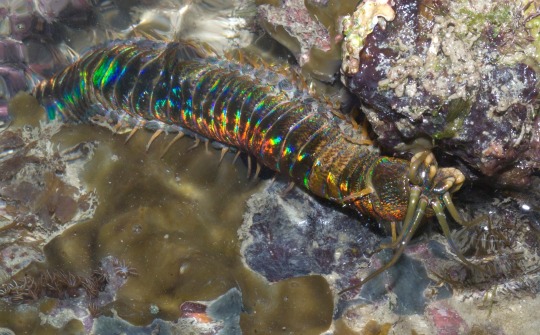
Bobbit worm (Eunice aphroditois)
Photo by Ria Tan
#bobbit worm#bristle worm#eunice aphroditois#eunice#eunicidae#eunicida#errantia#aciculata#polychaeta#annelida#lophotrochozoa
398 notes
·
View notes
Photo

Pile Worm (Alitta succinea)
by Hans Hillewaert
#pile worm#clam worm#Alitta succinea#alitta#Nereididae#Phyllodocida#Aciculata#polychaeta#annelida#uploads#worms#annelid worms
82 notes
·
View notes
Text

All of the Kelly Grummons opuntia from the Texas Native Plant Lab at the Dallas Arboretum, our hands-on teaching space, have been moved out into the Main Garden (the big leagues) Waterwise display. I can’t wait for many more people to see their gorgeous blooms!
Front:
Opuntia polyacantha ‘Citrus Punch’
Opuntia phaeacantha ‘Dark Knight’
Opuntia sp. ‘Little Monk’
Mid:
Echinocereus triglochidiatus
Back:
Opuntia aciculata
Opuntia aurea ‘Coombe’s Winter Glow’
Opuntia aciculata
Far back:
Opuntia ellisiana
#Opuntia phaeacantha ‘Dark Knight’#Opuntia polyacantha ‘Citrus Punch’#Opuntia sp. ‘Little Monk’#Echinocereus triglochidiatus#Opuntia aciculata#Opuntia aurea ‘Coombe’s Winter Glow’#Dallas arboretum#Texas Native Plant Lab#cactus#succulent
19 notes
·
View notes
Text
Beareded Fire Worm
The bearded fireworm is a bristled worm of the fireworm. The flattened segment worms are usually about 3 inches in width and 13 inches in length containing white venom filled bristles along the sides of its body.
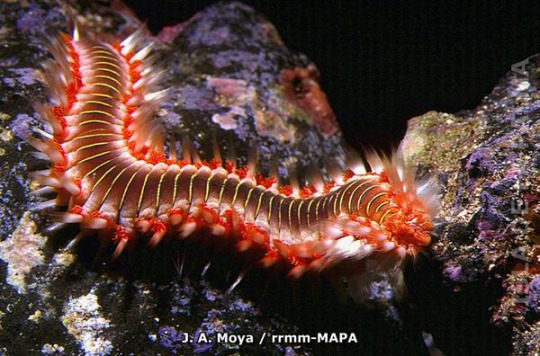
Scientific Name:
Hermodice carunculata
Taxonomic Classification:
Domain: Eukarya
Kingdom: Animalia
Phylum: Annelida
Class: Polychaeta
Order: Aciculata
Family: Amphinomidae
Genus: Hermodice

Location/Environment:
The bearded fireworm is known to occupy coral reefs beneath in the rocky or seagrass areas on the ocean floor and on muddy bottoms too.
They are also distributed throughout the tropical western Atlantic and Accession Island.
Swim up to depths as low as 500ft
Behavior:
The venom filled bristles are known to puncture flesh and release venom. They easily are known to easily break off when the bearded fireworm is handled.
When the bristles secrete it venom it causes an intense burning irritation through contact which may cause nausea and dizziness(lasts for a few hours)
The worms forms a defensive posture by arching its body dorsally to show expansive fascicle of harpoon chaetae when disturbed
The bristles form a protective matting for the worm and give the fireworm its fuzzy appearance.
Fleshy lobe like paddles called parapodia is used for swimming, burrowing and creating a feeding current.
These worms are active during the day and hide at night.
The firearm worm undergoes biolumenese during sexual reproduction.

-bearded firearm bioluminating-
Reproduction/Growth or Development
The worms have both sexual and asexual reproduction
Asexual reproduction occurs when individuals go through fragmentation by dividing its body into one or more parts that regenerate to form heads, tails or both, and grow into new individuals.
spawning occurs 2-5 days after a full moon
Nutrition:
The fireworm is known to feed on hard corals anemones, and small crustaceans.
While they prefer these for foods they may also eat squid, clam, shrimp, krill, shrimp, and mussels.
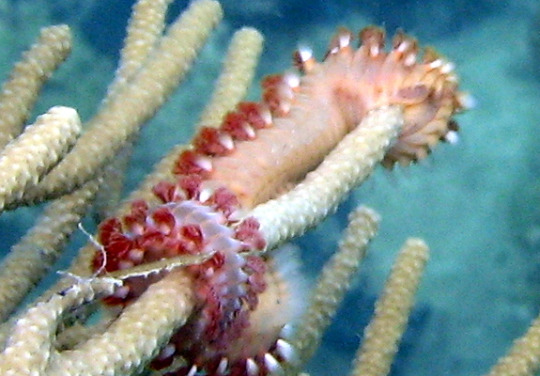
Fun Facts:
They convert ocean debris into carbon dioxide, which is then used by the plankton to help with photosynthesis.
Spawning usually occurs 2-5 days after a full moon.
Sources:
https://www.lamar.edu/arts-sciences/biology/marine-critters/marine-critters-2/fireworm.html
https://www.elitereaders.com/underwater-creature-bearded-fireworm-venom/
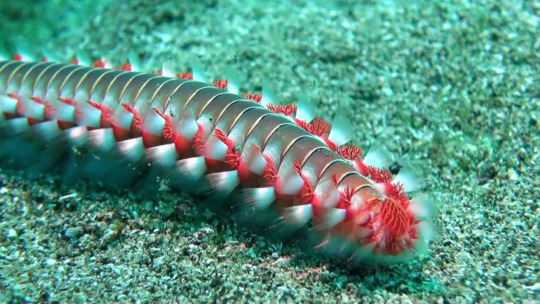
adios amigos
2 notes
·
View notes
Photo

Eastern Thalassian Oceanic Fauna
Saber Monkey (#1)
Kingdom: Animalia
Phylum: Chordata
Class: Mammalia
Order: Primates
Suborder: Haplorhini
Infraorder: Simiiformes
Family: Cercopithecidae
Tribe: Papionini
Genus: Smilopithecus
Species: S. piscophagus (”fish-eating knife ape”)
Ancestral species: Macaca radiata (Bonnet macaque)
Time period: late Nyctocene to early Solocene (102 million years to 118 million years in the future).
Information: a massive, piscivorous monkey the size of a lion, the Saber Monkey lives across the eastern coast of Thalassia, where it hunts in the shallow seas and estuaries. It uses its long teeth to help grip onto prey, and its hands and feet are webbed to help aid in swimming. Its thick, brown, fur coat is hydrophobic, meaning that water will not adhere to its surface, and it also doubles as protection against the cold. As of so far, we are uncertain of the threat it possesses to humans. Therefore, if approaching this animal, one should take reasonable caution.
Dragonfish (#2)
Kingdom: Animalia
Phylum: Chordata
Class: Actinopterygii
Order: Siluriformes
Family: Dracoichthyidae
Genus: Dracoichthyes
Species: D. siluroides (”silurus [a genus of catfish]-like dragon fish”)
Ancestral species: Bagarius yarrelli (Goonch)
Time period: early Solocene (105 million years to 120 million years in the future).
Information: a fast-moving oceanic catfish the size of a Great Barracuda, the Dragonfish bares a vague resemblance to the dragons of East Asian folklore. It hunts primarily in open oceans worldwide, and feeds upon primarily other fish. Its skin is dark blue on its back and light blue on its underside to provide camouflage. Armed with a vicious set of sharp teeth, the Dragonfish’s jaws is not something that you’d want to find yourself on the receiving end of. Its large eyes help it to see in the dark.
Vent Worm (#3)
Kingdom: Animalia
Phylum: Annelida
Class: Polychaeta
Subclass: Aciculata
Order: Xenopodia
Family: Deinoannelidae
Genus: Deinoannelida
Species: D. giganteus (”giant terrible annelid”)
Ancestral species: Alitta virens (Sandworm)
Time period: early to late Solocene (105 million years to 140 million years in the future).
Information: with its chimerical appearance, one would guess upon first glance that the Vent Worm were a creature from another planet. But in fact, it is just as much an earthen being as us. The Vent Worm, despite its name, does not live solely in volcanic vents. In fact, it can be found almost anywhere in the ocean worldwide, from warm, shallow seas to cold, deep trenches. Its name derives from the fact that it was first discovered near volcanic vents. The Vent Worm is a very-large annelid, being nearly 6 feet in length. It predates on a variety of different creatures, including fish and even occasionally stripping pieces of flesh off of live animals. Its skin is a sandy color with its crest and break are grey.
Estuarine Coelacanth (#4)
Kingdom: Animalia
Phylum: Chordata
Class: Sarcopterygii
Subclass: Actinistia
Order: Coelacanthiformes
Family: Microcoelacanthidae
Genus: Microcoelacanthus
Species: M. orientalis (”eastern small hollow spine”)
Ancestral species: Latimeria menadoensis (Indonesian coelacanth)
Time period: late Lithocene to early Solocene (65 million years to 110 million years in the future).
Information: at only around a foot in length, the Estuarine Coelacanth is a fairly-small creature. Its scales a light blue color, allowing it to blend in with the surrounding water. It feeds primarily off of aquatic plants, but will also eat worms it can find in the sediment. Though it is low on the food chain, a special chemical in its flesh prevents most predators from wanting to eat it, as its flesh tastes notoriously-bad. It is found across much of Thalassia’s coast.
Cormorant Turtle (#5)
Kingdom: Animalia
Phylum: Chordata
Class: Reptilia
Clade: Testudinata
Order: Testudines
Suborder: Cryptodira
Family: Ornithochelidae
Genus: Ornithochelys
Species: O. coelosteus (”hollow-boned bird-turtle”)
Ancestral species: Macrochelys temminckii (Alligator snapping turtle)
Time period: early Solocene (105 million years to 115 million years in the future).
Information: a massive turtle the size of a bottlenose dolphin, the Cormorant Turtle is a semiaquatic hunter found along the coast of eastern Thalassia and western Occidensia. It feeds primarily of fish, and is notable amongst turtles for the fact that its shells is now vestigial, taking the form of armor plating on its back and underside. Their skin is green to blend in in the kelp forests where they predominantly hunt. Its aerodynamic body allows it to travel at fast speeds, and its clawed hind legs are for helping it move on land.
Bat Seal (#6)
Kingdom: Animalia
Phylum: Chordata
Class: Mammalia
Order: Carnivora
Suborder: Caniformia
Infraorder: Arctoidea
Clade: Pinnipedia
Superfamily: Otarioidea
Family: Aeropinnipedidae
Genus: Aeropinnepedia
Species: A. chiropterygoides (”bat-like air seal”)
Ancestral species: Neophoca cinerea (Australian sea lion)
Time period: early to late Solocene (105 million years to 140 million years in the future).
Information: the Bat-Seal is a very-interesting case of convergent evolution. As its name would suggest, though it morphologically looks like a bat, it is, in fact, a seal that has evolved to live a life in the air, even going so far as to re-evolve hind legs with digits. The Bat-Seal is comparable in size of a wolf, and is a cathemeral piscivore, predating on a wide variety of fish. Its brown fur is hydrophobic, hence allowing it to dive into the water if necessary. Its eyesight is exceptional, and it is particularly attracted to shiny objects, which it perceives as its prey. Its threat level to humans seems to be low, and they show a kind-of friendly curiosity around people. They live along several coastal regions worldwide.
Sea Parrot (#7)
Kingdom: Animalia
Phylum: Chordata
Superclass: Osteichthyes
Class: Actinopterygii
Order: Perciformes
Suborder: Labroidei
Family: Labridae
Genus: Psittacoichthyes
Species: P. fatalis (”deadly parrotfish”)
Ancestral species: Chlorurus sordidus (Daisy parrotfish)
Time period: early Solocene (105 million years to 115 million years in the future).
Information: the Sea-Parrot is peculiar for a parrotfish in that it is actually a carnivore. An ornately-colored carnivore. At around the size of a small dog, the Sea-Parrot is a formidable predator of smaller fish, in particular the Estuarine Coelacanth. It lives across many tropical and subtropical oceans of the world, and can occasionally be found wandering into more-temperate waters, where its bright green and blue scales make it stand out a lot from the local oceanic fauna. Its threat level is low to humans, and they, in fact, seem very-skittish around humans.
Whale Monkey (#8)
Kingdom: Animalia
Phylum: Chordata
Class: Mammalia
Order: Primates
Suborder: Haplorhini
Infraorder: Simiiformes
Family: Hydropithecidae
Genus: Hydropithecus
Species: H. cetops (”whale-faced water ape”)
Ancestral species: Papio anubis (Olive baboon)
Time period: early Solocene (105 million years to 120 million years in the future).
Information: bearing a vague resemblance to the Ambulocetus of an era long past, the Whale Monkey is a lion-sized semiaquatic hunter found across much of Thalassia’s coast. It is a crafty and intelligent primate, and can make tools, though it rarely needs them. The Whale Monkey is an omnivore, and feeds off of a variety of plant matter and animals. They are social animals, and tend to live in small troops of around 10 other individuals. Their fur is brown and hydrophobic. Like primates from our own timeline, they are very playful and inquisitive towards humans, and will actively approach them. This may perhaps one of the most-bizarre creatures we’ve encountered so far...
Emperor Seal (#9)
Kingdom: Animalia
Phylum: Chordata
Class: Mammalia
Order: Carnivora
Suborder: Caniformia
Infraorder: Arctoidea
Clade: Pinnipedia
Family: Phocidae
Genus: Suchocetus
Species: S. imperator (”emperor crocodile-whale”)
Ancestral species: Phoca vitulina (Harbor seal)
Time period: early to late Solocene (105 million years to 140 million years in the future).
Information: At 20 feet in length and fully aquatic, the Emperor Seal bears a vague resemblance to pliosaurs. Likewise, it fills a similar ecological role. Stalking the seas around Thalassia, the Emperor Seal hunts a variety of other animals, both big and small. Its fur is brown with grey spots, and concealed in its jaws are a large set of canines, which allow it to grip onto its prey and tear it apart. But even this massive animal has predators. It is predated upon by both the Great Sea-Reaper and the Giant Eel Shark alike, and therefore, its smaller size compared to both make it vulnerable. Luckily, it can also use this to its advantage, as this allows it to retreat to the shallows if necessary.
Coral Shark (#10)
Kingdom: Animalia
Phylum: Chordata
Class: Chondrichthyes
Subclass: Elasmobranchii
Infraclass: Euselachii
Superorder: Selachimorpha
Order: Squaliformes
Family: Squalidae
Genus: Microcarcharus
Species: M. orientalis (”eastern small shark”)
Ancestral species: Squalus acanthias (Spiny dogfish)
Time period: early to mid Solocene (105 million years to 125 million years in the future)
Information: the Coral Shark, at only 2 feet long, is a fairly-small animal. Feeding on a variety of smaller fish, particularly Kittenfish, the Coral Shark lives primarily in tropical reefs worldwide, hence its name, but can be found in subtropical and even temperate regions. Its skin is a greyish-white color, and it is a fairly-skittish animal.
Reef Dagger (#11)
Kingdom: Animalia
Phylum: Chordata
Class: Actinopterygii
Order: Scombriformes
Family: Xenoscombridae
Genus: Pseudoanguilla
Species: P. ferox (”fierce false eel”)
Ancestral species: Ruvettus pretiosus (Oilfish)
Time period: early Solocene (105 million years to 117 million years in the future).
Information: at around 3 feet in length with 4-inch-long tusk-like teeth, the Reef Dagger is a force to be reckoned with. Living along much of Thalassia coast, this mottled green-and-brown predator hunts by ambushing, waiting silently on algae-covered rocks for smaller to approach before jolting up and engulfing them in its maw. It is a fairly slow-swimming animal, and hence uses its fins to “walk” on the seafloor. Certainly not something you want to accidentally step on...
Reef Shark (#12)
Kingdom: Animalia
Phylum: Chordata
Class: Chondrichthyes
Subclass: Elasmobranchii
Infraclass: Euselachii
Superorder: Selachimorpha
Order: Heterodontiformes
Family: Sinocarcharidae
Genus: Sinocarcharus
Species: S. macrops (”large-eyed Chinese shark”)
Ancestral species: Heterodontus portusjacksoni (Port Jackson shark)
Time period: early to late Solocene (105 million years to 140 million years in the future).
Information: the Reef Shark is fairly-small, being only about 4 feet long. It lives along the coasts of eastern Thalassia and feeds predominantly on smaller fish. its skin is brown with black spots on its back.It is primarily nocturnal, hence its large eyes. They are skittish animals, being easily scared off by larger animals.
0 notes
Text
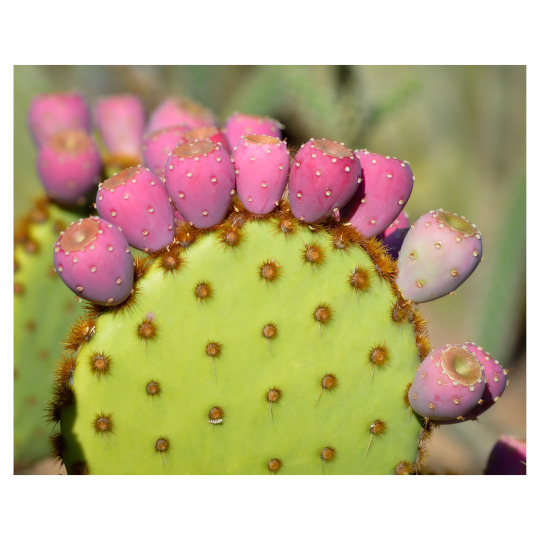
Tunas.
Ripening fruit on a chenille pricklypear cactus (Opuntia aciculata), at Desert Botanical Garden, Phoenix, Arizona.
423 notes
·
View notes
Photo
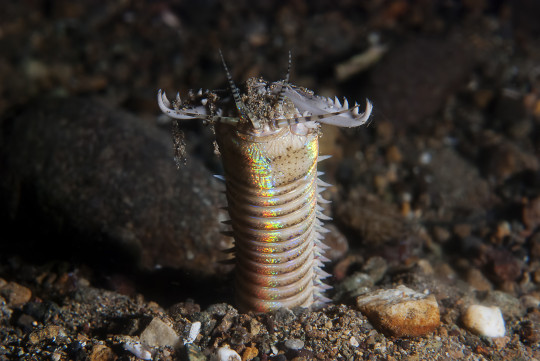
Bobbit worm (Eunice aphroditois)
Photo by Arne Kuilman
#bobbit worm#bristle worm#eunice aphroditois#eunice#eunicidae#eunicida#errantia#aciculata#polychaeta#annelida#lophotrochozoa
24 notes
·
View notes
Text
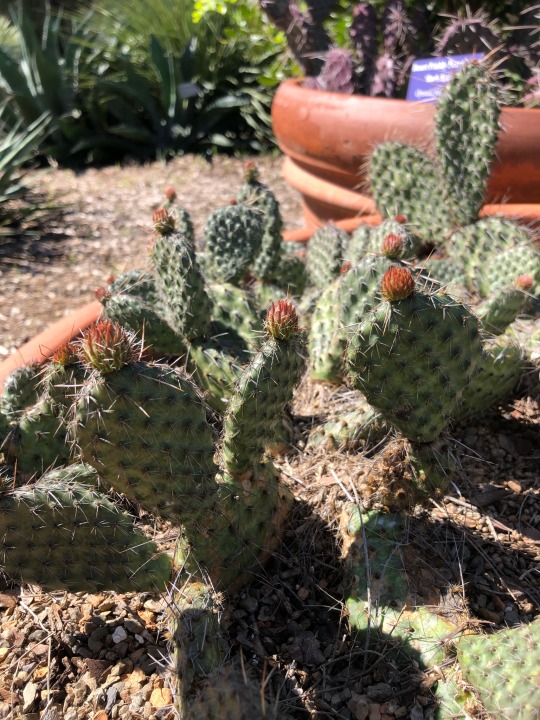


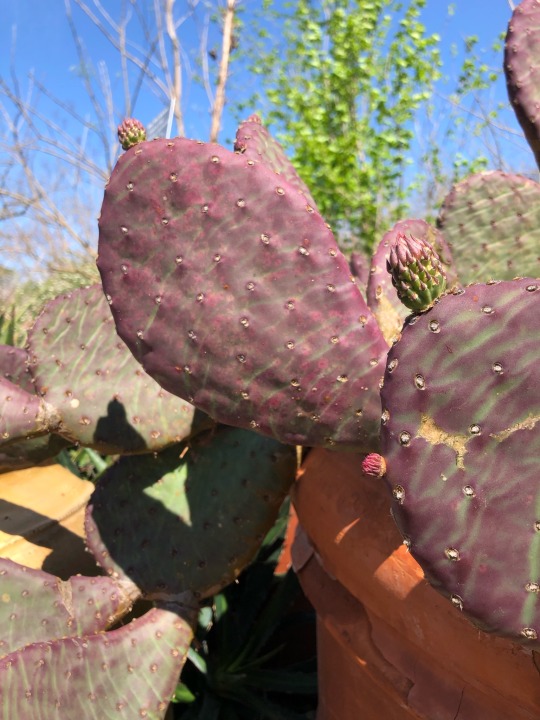

Texas Native Plant Lab / Dallas Arboretum
Opuntia sp. ‘Little Monk’
Opuntia polyacantha ‘Citrus Punch’
Opuntia phaeacantha 'Dark Knight’
Opuntia aurea 'Coombe’s Winter Glow’
Opuntia aciculata / Chenille cactus
#texas native plant lab#dallas arboretum#worklife#Opuntia sp. ‘Little Monk’#Opuntia polyacantha ‘Citrus Punch’#Opuntia phaeacantha 'Dark Knight’#Opuntia aurea 'Coombe’s Winter Glow’#opuntia aciculata#prickly pear#cactus#succulent#dallas
115 notes
·
View notes
Text

Texas Native Plant Lab / Dallas Arboretum
Opuntia aciculata, chenille cactus, is finally blooming, too.
#cactus#prickly pear#opuntia#cactguy#dallas arboretum#texas native plant lab#opuntia aciculata#chenille cactus
32 notes
·
View notes
Photo
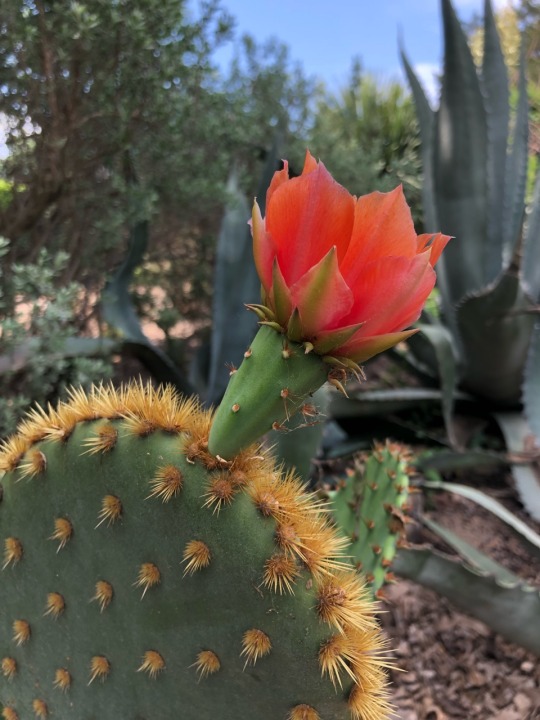

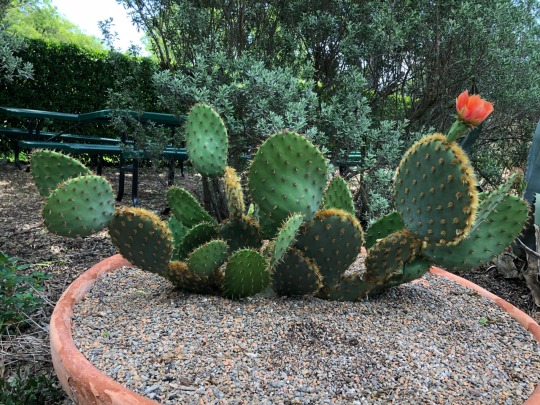
Texas Native Plant Lab / Dallas Arboretum Another week brings new blooms; today the Opuntia aciculata, chenille cactus, is stunningly red-orange.
#texas native plant lab#dallas arboretum#opuntia aciculata#chenille cactus#cactus#succulent#work life
427 notes
·
View notes
Photo
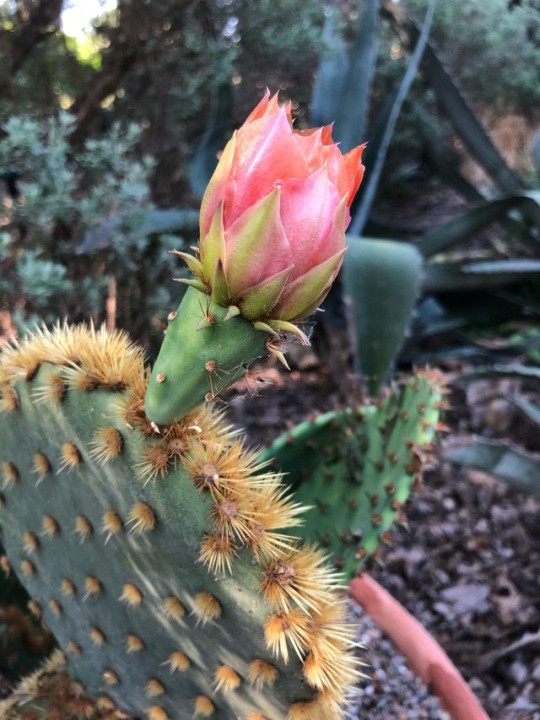
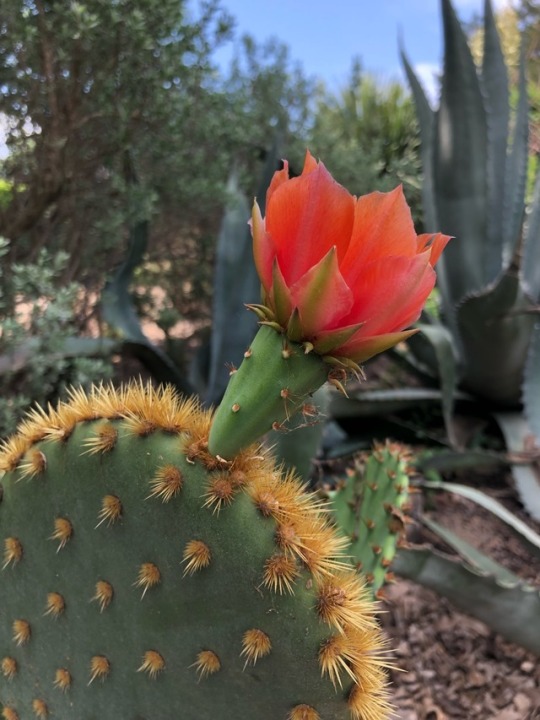
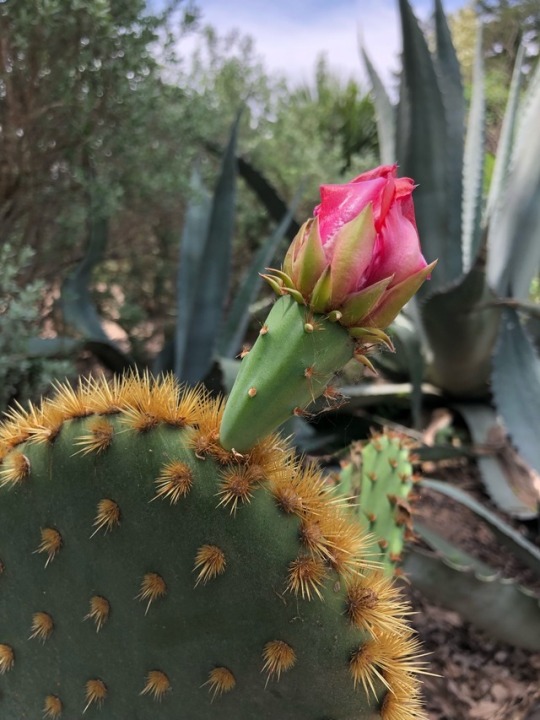
Texas Native Plant Lab / Dallas Arboretum Opuntia aciculata / chenille cactus trio
#texas native plant lab#dallas arboretum#opuntia aciculata#chenille cactus#cactus#succulent#worklife
144 notes
·
View notes
Photo

Texas Native Plant Lab / Dallas Arboretum The last of the sport prickly pears, Opuntia aciculata, commonly called chenille cactus due to the omnipresent glochids, has finally joined the show - but you’ll have to look very closely to see the new growth.
#Texas native plant lab#dallas arboretum#opuntia aciculata#chenille cactus#opuntia#cactus#succulent#work life
100 notes
·
View notes
Photo
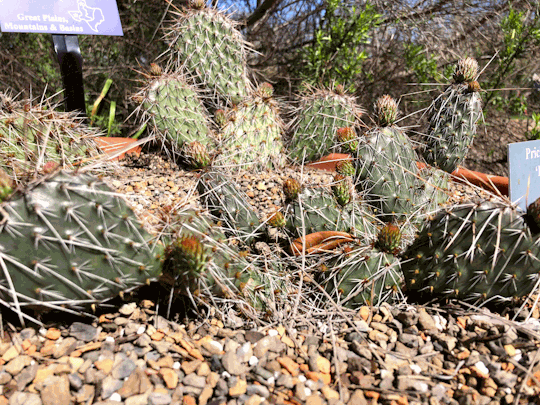

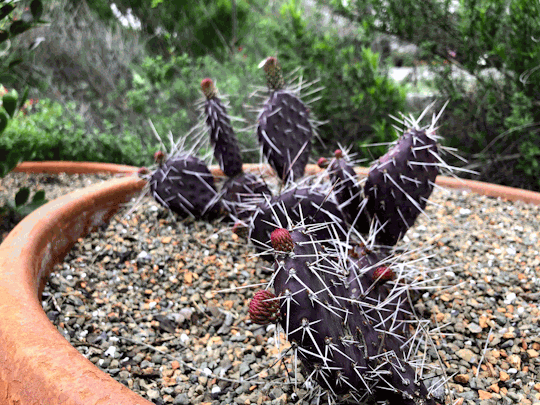

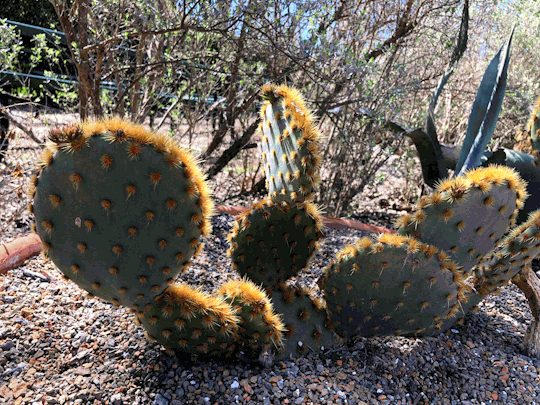
Texas Native Plant Lab / Dallas Arboretum 2/5 have bloomed, 2/5 still have buds, and 1/5 have no buds yet - but the first round of growth for the year is looking good. Opuntia sp. ‘Little Monk’ Opuntia polyacantha ‘Citrus Punch’ Opuntia phaeacantha ‘Dark Knight’ Opuntia aurea 'Coombe’s Winter Glow’ Opuntia aciculata / Chenille cactus
#texas native plant lab#dallas arboretum#cactus#succulent#opuntia little monk#opuntia polyacantha#opuntia aurea#opuntia aciculata#work life
27 notes
·
View notes
Photo

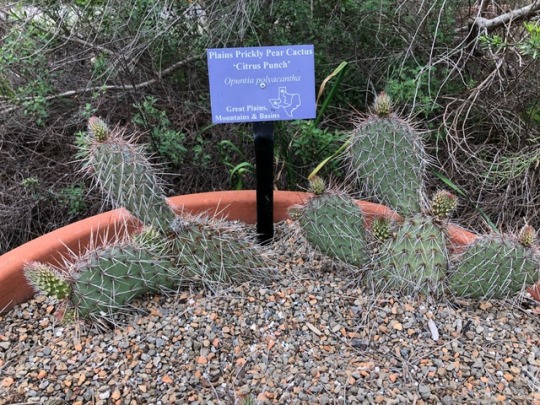

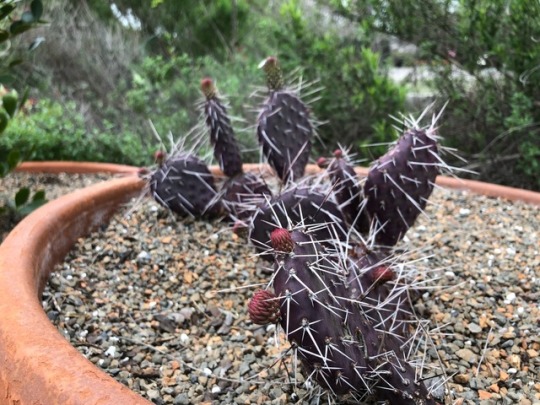
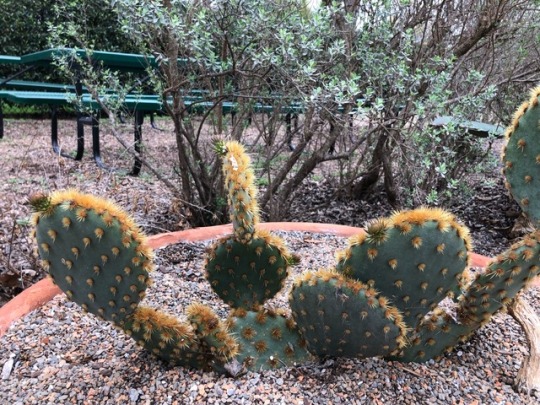
Texas Native Plant Lab / Dallas Arboretum
Opuntia sp. ‘Little Monk’ Opuntia polyacantha ‘Citrus Punch’ Opuntia phaeacantha 'Dark Knight’ Opuntia aurea 'Coombe’s Winter Glow’ Opuntia aciculata / Chenille cactus
#Texas native plant lab#dallas arboretum#worklife#opuntia little monk#opuntia polyacantha#opuntia phaeacantha#opuntia aurea#opuntia aciculata#citrus punch#dark knight#coombe’s winter glow#chenille cactus#prickly pear#Kelly grummons
23 notes
·
View notes